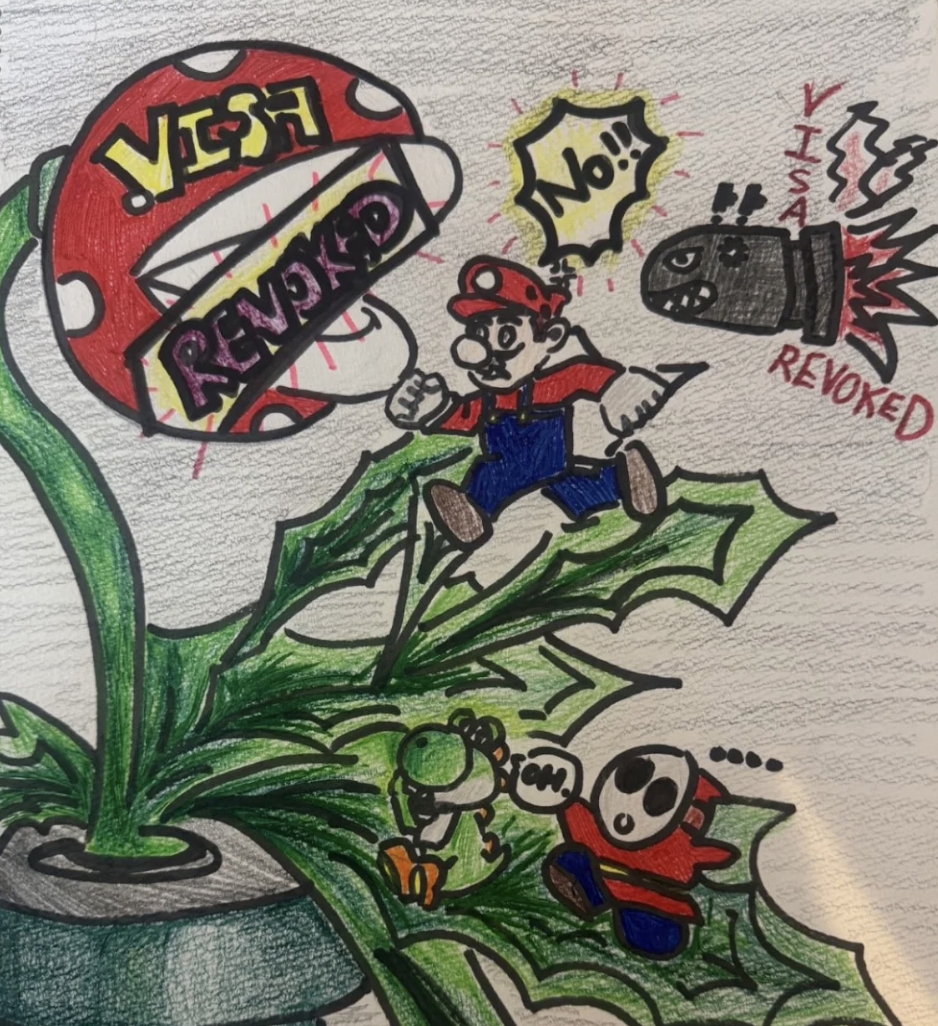Unsustainable Fashion: Say No to Save Our Earth
June 8, 2022
Each second, an entire garbage truck worth of discarded clothing is thrown in landfills or incinerated globally. In 2015, a survey revealed that ⅓ of young UK women tended to call a garment “old” after a mere two wears. With clothing production having doubled in the past 15 years, apparel is being produced, purchased, and thrown away at higher rates than ever before, a process is destroying ecosystems, speeding up global warming, and exacerbating labor exploitation. This modern culture of shopping cheap, often, and abundantly needs to be addressed urgently. Our world desperately needs a solution to this massive problem that we have created.
In the past few years, a troubling development has emerged on the internet: Shein.com, which is an online-only fashion brand, mostly catering to young women. Their selection is massive (wedding dress or selfie stick, anyone?) and always up-to-date with trend cycles. The prices are also enticingly low. When items are this cheap—$3.00 for a tank top, $15.00 for trousers, or $2.00 for a phone case—consumers are left to wonder: How is Shein.com able to sell these items at such low cost?
In a well-hidden forest, behind the thick, steel barricade of an unnamed factory, a worker toils until collapse. This is the reality of fast fashion enterprises: they force laborers to endure a grueling (often illegal) number of hours for an unlivable wage. These laborers possess little to no legal protection or employee rights; they work nonstop, all for your cheap shirt or jeans that will likely go out of style or rip in a month. Specifically for Shein, their main manufacturing plants are in the Guangzhou district of China. The scary thing about Shein is its opaqueness; they never release sustainability reports or financial data, and even the origins of the company itself are unclear. Material sourcing information is unavailable, and little is known about exactly where they operate, who their laborers are, and how they are treated—red flags upon red flags.
Even worse, the popular social platform TikTok has helped Shein rapidly gain popularity. Through the coupling of these two online platforms, fast fashion’s detrimental cultures of hyperconsumerism, rapid trends, and waste have worsened. In popular TikTok clips, Shein shows storage rooms with dozens upon dozens of plastic packages lining the walls, filled with various colorful garments to be sold. All throughout the video, catchy pop music loops in the background. If you have TikTok, you’ve likely seen these sickly sweet advertisements for yourself. Customers aren’t deterred by the obvious waste. Seeing the huge range of available items for sale tempts them even more.
Shein is just one recent example of many thriving fast fashion companies, however. There are even bigger giants, such as H&M Group and Inditex (the parent company of Zara). To keep up with competition, these clothing companies amp up their production and encourage consumers to buy, buy, buy. It’s working for them, but their success—attributed to low costs, continuous product releases, and trendiness—comes with grave consequences: not just to their labor forces, but with the destruction of the environment.
In 2015 alone, the fashion industry emitted 1.2 billion tons of greenhouse gasses. Each year, 92 million tons of clothing waste ends up in our landfills and the oceans as well, contributing further to greenhouse gas emissions. Beyond the human impacts, fast-fashion manufacturing poses a threat to wildlife: microplastics from the production of our garments seep into the ocean and are ingested by marine organisms, often leading to fatal outcomes.
Our shopping habits create a destructive cycle: Excess consumerism spurs production, and production spurs excess consumption. Such habits have an impact on the Earth, on the atmosphere, on our wildlife, on the oceans, and on other human beings. The detrimental impacts of buying into fast fashion simply aren’t worth the long-term costs to not only yourself but to society as a whole.
By shifting our habits to be more sustainable, we can significantly reduce our environmental footprint and help make the world a better place. Like millions of other consumers, I need to make more environmentally-conscious shopping choices and implement more consistent changes in my life. There are many ways that we can do this, such as thrift shopping, swapping clothes with friends, renting clothes for special occasions, avoiding fast fashion giants, and simply shopping less.
And now, I ask you to reflect on the decisions you make in regard to your wardrobe and to do your best to adopt more sustainable consumer habits. If you choose to ignore the multitude of problems associated with Shein, for example, and continue to fund the immoral practices of the company, I implore you to reflect on your values and priorities. It’s not your wallet that does the talking, but yourself. Discipline is the root of stemming excess consumerism and fast fashion.
But if you’ve shopped on Shein before, don’t fret or get offended: I used to shop at Forever 21 all the time; I would be a hypocrite if I shamed you for your past choices. It’s no use to just toss away your wardrobe out of guilt now; that will only contribute to the ever-increasing volume of landfills. Keep wearing the items you currently own and make the most out of them. Instead of dwelling on past mistakes, you can redirect your awareness in a more positive direction: learning and growing from the past, to work towards a more responsible, ethical, and sustainable future.
We all should care a great deal about the Earth. Our current planet is all we get—at least until someone figures out the whole colonizing Mars thing. Let’s all do our part to take care of our home, its natural resources, and all its living inhabitants while we can still make a difference.




















Junu Min • May 31, 2023 at 10:47 AM
This was a thought-provoking article that got me aware of the hidden dark sides of the fashion industry about how they risk permanent environmental damage just for individual profit. Well structured and written, especially towards the end.